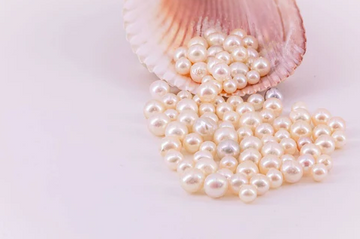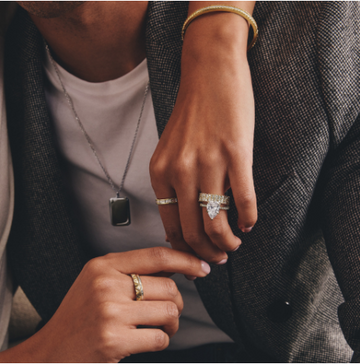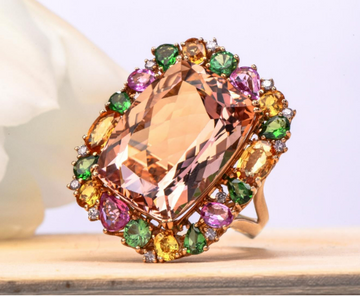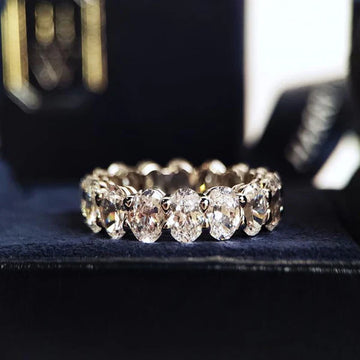Pearls. These shimmering spheres, born not from the earth but from the depths of mollusks, have captivated humanity for millennia. Their timeless elegance and ethereal beauty have made them prized adornments, symbols of purity, and emblems of sophistication. But not all pearls are created equal. The quality of a pearl is determined by a complex interplay of factors, each contributing to its overall allure and value. This blog post will be your compass, guiding you through the key elements that define a pearl’s quality, helping you distinguish the ordinary from the extraordinary.
I. Lustre: The Heart of Pearl’s Brilliance
Lustre is, arguably, the single most important factor determining a pearl’s quality. It refers to the brilliance, shine, and reflectivity of the pearl’s surface. A high-quality pearl possesses a sharp, bright lustre that allows you to see your own reflection clearly.
- What causes lustre? Lustre is created by the reflection of light from the multiple layers of nacre (calcium carbonate) that make up the pearl. The more layers and the more tightly packed they are, the more brilliant the lustre.
- Grading Lustre: Lustre is typically graded as Excellent, Very Good, Good, Fair, or Poor. “Excellent” pearls have a sharp, bright reflection; “Poor” pearls appear dull and lack any significant shine.
- Depth of Lustre: Look beyond just the surface reflection. High-quality pearls have a depth of lustre, meaning the light seems to emanate from within the pearl.
- How to Assess Lustre: Hold the pearl under a direct light source and observe the reflection. A blurry or weak reflection indicates poor lustre.
II. Surface Quality: Spotting the Blemishes
Surface quality refers to the smoothness and flawlessness of the pearl’s surface. While perfectly flawless pearls are extremely rare (and command a premium), the fewer blemishes, the higher the quality.
- Types of Blemishes: Blemishes can include spots, bumps, wrinkles, scratches, or uneven nacre.
- Impact on Value: The size, number, and location of blemishes all affect the pearl’s value. A small blemish on the side that can be hidden in a setting will have less impact than a large, prominent blemish.
- Natural vs. Cultured: Keep in mind that blemishes are a natural part of pearl formation, both in natural and cultured pearls.
- How to Assess Surface Quality: Carefully examine the pearl’s surface under good lighting. Use a magnifying glass if necessary to identify any imperfections.
III. Shape: Beyond the Round
While perfectly round pearls are often considered the most desirable (especially in classic strands), shape preferences are subjective and depend on the style of the jewelry.
- Round: Perfectly round pearls are the rarest and most valuable shape.
- Near-Round: Slightly off-round pearls are still highly sought after and can be a more affordable alternative to round pearls.
- Drop: Pear-shaped pearls that taper elegantly at one end are popular for pendants and earrings.
- Button: Flattened, round pearls are often used in earrings or as accents in rings.
- Baroque: Irregularly shaped pearls that are unique and often highly prized for their individuality.
- Circle: Pearls with concentric rings or grooves around their circumference.
IV. Size: The Measure of Grandeur
Size is a straightforward factor, measured in millimeters (mm). Generally, larger pearls are rarer and more valuable.
- Average Sizes: Most cultured pearls range in size from 7mm to 14mm.
- South Sea Pearls: Known for their impressive size, South Sea pearls can reach up to 20mm or larger.
- Size and Origin: The size of a pearl is often influenced by the type of oyster used in its cultivation.
- Size and Price: Price increases dramatically as the size of the pearl increases, especially for perfectly round pearls.
V. Color: A Symphony of Hues
Pearls come in a wide range of colors, including white, cream, pink, gold, silver, black, and even iridescent shades. Color preferences are subjective and influenced by personal taste and fashion trends.
- Body Color: The dominant color of the pearl.
- Overtone: A subtle iridescent hue that overlays the body color. The presence of overtone can enhance the pearl’s beauty and value.
- Matching: In strands of pearls, color consistency is crucial for a harmonious and aesthetically pleasing look.
- Rare Colors: Naturally colored black and blue pearls are generally rare and command a premium price.
VI. Nacre Thickness: The Foundation of Longevity
Nacre thickness refers to the thickness of the nacre layers that make up the pearl. Thicker nacre results in a more durable pearl with a richer luster.
- Cultured Pearls: Nacre thickness is carefully controlled during the culturing process.
- Durability: Thin nacre can chip or peel, revealing the nucleus underneath.
- Translucency: Thicker nacre gives the pearl a greater depth of translucency, enhancing its beauty.
- Assessing Nacre Thickness: It is difficult to accurately assess nacre thickness without specialized equipment, which is why purchasing from a reputable source is essential.
VII. Origin and Type: A Mark of Uniqueness
The origin and type of pearl also contribute to its overall quality and value. Different types of pearls are produced in different regions and by different species of oysters.
- Akoya Pearls: Known for their perfectly round shape and high lustre, Akoya pearls are primarily cultivated in Japan and China.
- South Sea Pearls: Prized for their large size and creamy white or golden color, South Sea pearls are cultivated in Australia, Indonesia, and the Philippines.
- Tahitian Pearls: Naturally black pearls cultivated in French Polynesia. They exhibit a range of colors, including gray, green, blue, and purple.
- Freshwater Pearls: Cultured in freshwater lakes and rivers, freshwater pearls are generally more affordable than saltwater pearls. They come in a wide range of shapes and colors.
VIII. Trust Your Eye and Source Wisely
Evaluating pearl quality can be complex, but by understanding these key factors, you can confidently navigate the world of pearls and make informed decisions. Ultimately, trust your eye and choose the pearls that appeal to you the most. Most importantly, purchase from a reputable source that provides detailed information about their pearls and offers a guarantee of quality. A discerning eye, coupled with a trustworthy vendor, will lead you to a pearl that you’ll cherish for a lifetime.





